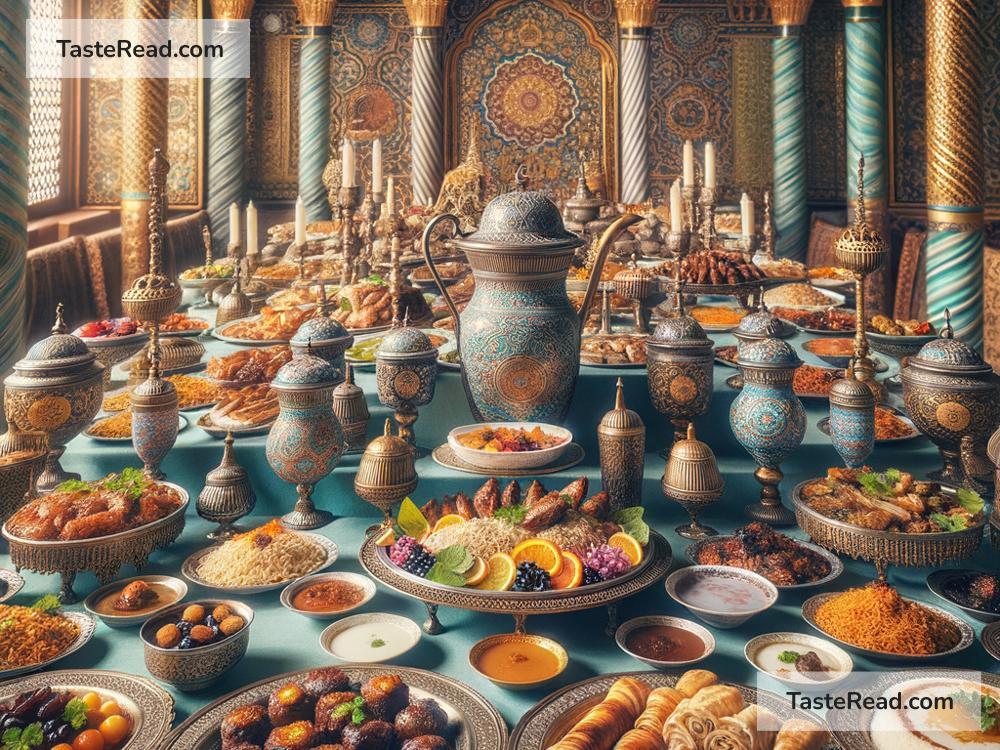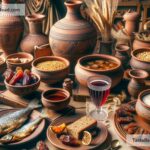The Culinary Traditions of the Ottoman Empire: A Flavorful History
The Ottoman Empire was one of the greatest empires in history, spanning over 600 years and stretching across parts of Europe, Asia, and Africa. With such a vast territory, it is no surprise that its cuisine was rich, diverse, and full of delicious flavors. The culinary traditions of the Ottoman Empire were shaped by many different cultures, blending ingredients and cooking techniques from regions like the Middle East, Balkans, Central Asia, and the Mediterranean.
Today, the legacy of Ottoman cooking can still be seen in the cuisines of Turkey and many other countries that were once part of the empire. In this blog post, let’s explore how Ottoman food was unique, what made it special, and how its influence continues to spread across modern kitchens.
A Fusion of Cultures
One of the defining features of Ottoman cuisine was its ability to combine different culinary traditions. The Ottoman chefs borrowed ideas and ingredients from Persia, the Arabs, the Balkans, and even the Italians. For instance, they used spices and cooking techniques from the Middle East, dairy-rich dishes from the Balkan regions, and pasta-like creations inspired by Italian cooking. The result was a beautifully balanced cuisine where sweet, sour, salty, and spicy flavors came together in harmony.
The Ottoman Sultans took pride in their kitchens, and food was an essential part of their court life. They often invited chefs from different regions to cook their traditional recipes, adding new layers to the empire’s extensive culinary repertoire.
Ingredients of the Empire
The Ottomans had access to a wide variety of ingredients due to their empire’s size and diverse regions. Common staples in their cooking included:
- Rice and grains: Rice, bulgur, and wheat were used in pilafs, breads, and pastries.
- Meat: Lamb and mutton were the most popular, but beef and chicken were also common. Meat was often grilled, roasted, or cooked slowly to create tender and flavorful dishes.
- Seafood: With access to seas like the Mediterranean and the Black Sea, fish and shellfish were important in Ottoman cuisine.
- Vegetables: Eggplants, zucchini, spinach, beans, and lentils were key ingredients in many dishes.
- Dairy: Yogurt, a cornerstone of Turkish cooking, played an important role in Ottoman meals. Cheeses and milk were also common.
- Fruits and nuts: Apricots, figs, pomegranates, almonds, and pistachios added sweetness and texture to both savory and sweet dishes.
- Spices: Cinnamon, cloves, cumin, black pepper, saffron, and sumac brought warm and complex flavors to Ottoman dishes.
Signature Dishes
The Ottoman Empire gave birth to many famous dishes that are still enjoyed today. Here are some examples:
1. Pilaf
Pilaf, or “pilav” in Turkish, was a signature dish of the Ottoman kitchen. Made with rice or bulgur mixed with meats, vegetables, nuts, or dried fruits, it was a versatile meal served at both royal banquets and everyday family tables.
2. Kebabs
Grilled meats, known as “kebabs,” were a favorite among the Ottomans and continue to be popular across modern Turkey and the Middle East. Variations included shish kebabs (meat skewers) and doner kebabs (meat cooked on a rotating spit).
3. Dolma and Sarma
Dolma are stuffed vegetables, like eggplants, peppers, or tomatoes, filled with rice and spices. Sarma consists of grape leaves stuffed with similar fillings. These dishes were often served as appetizers or as part of a main meal.
4. Baklava
Baklava, a sweet dessert made from layers of phyllo dough, nuts, and syrup or honey, is one of the most famous Ottoman desserts. It was often served at celebrations and special occasions.
5. Turkish Coffee
Turkish coffee originated in the Ottoman Empire and quickly became part of everyday life. The strong coffee was brewed slowly in a special pot called a “cezve” and served in small cups, often accompanied by sweets. It became an important tradition for social gatherings.
Dining Culture in the Ottoman Empire
Food was more than just sustenance in the Ottoman Empire—it was a way of life. The imperial kitchen, located in Topkapi Palace in Istanbul, was massive and employed hundreds of chefs. These chefs were highly skilled, often specializing in one particular dish or technique.
Mealtimes were seen as an opportunity for hospitality and socializing. Ottoman meals were often served on large platters, encouraging people to come together and share food. Banquets held by the sultans were legendary for their lavishness, showcasing the best dishes the empire had to offer.
Another important tradition was serving meals in small portions alongside bread. Bread was a sacred staple, symbolizing abundance and prosperity.
Legacy of Ottoman Cuisine
Even though the Ottoman Empire no longer exists, its culinary traditions remain alive in modern Turkish cuisine and the cuisines of countries like Greece, Lebanon, and Bulgaria. The dishes, flavors, and techniques developed during the Ottoman period continue to connect people across borders and cultures.
Today, whether you’re enjoying a plate of stuffed grape leaves, sipping Turkish coffee, or savoring baklava, you’re experiencing the rich culinary history of the Ottoman Empire. These traditions remind us of how food can bring people together, share stories, and celebrate culture.
The culinary traditions of the Ottoman Empire are a testament to the empire’s rich and diverse history. From elaborate palace banquets to simple family meals, Ottoman cuisine shows us the power of blending cultures and creating harmony through food. Each bite carries centuries of history, and thanks to the empire’s enduring influence, we can still enjoy these flavors today.


